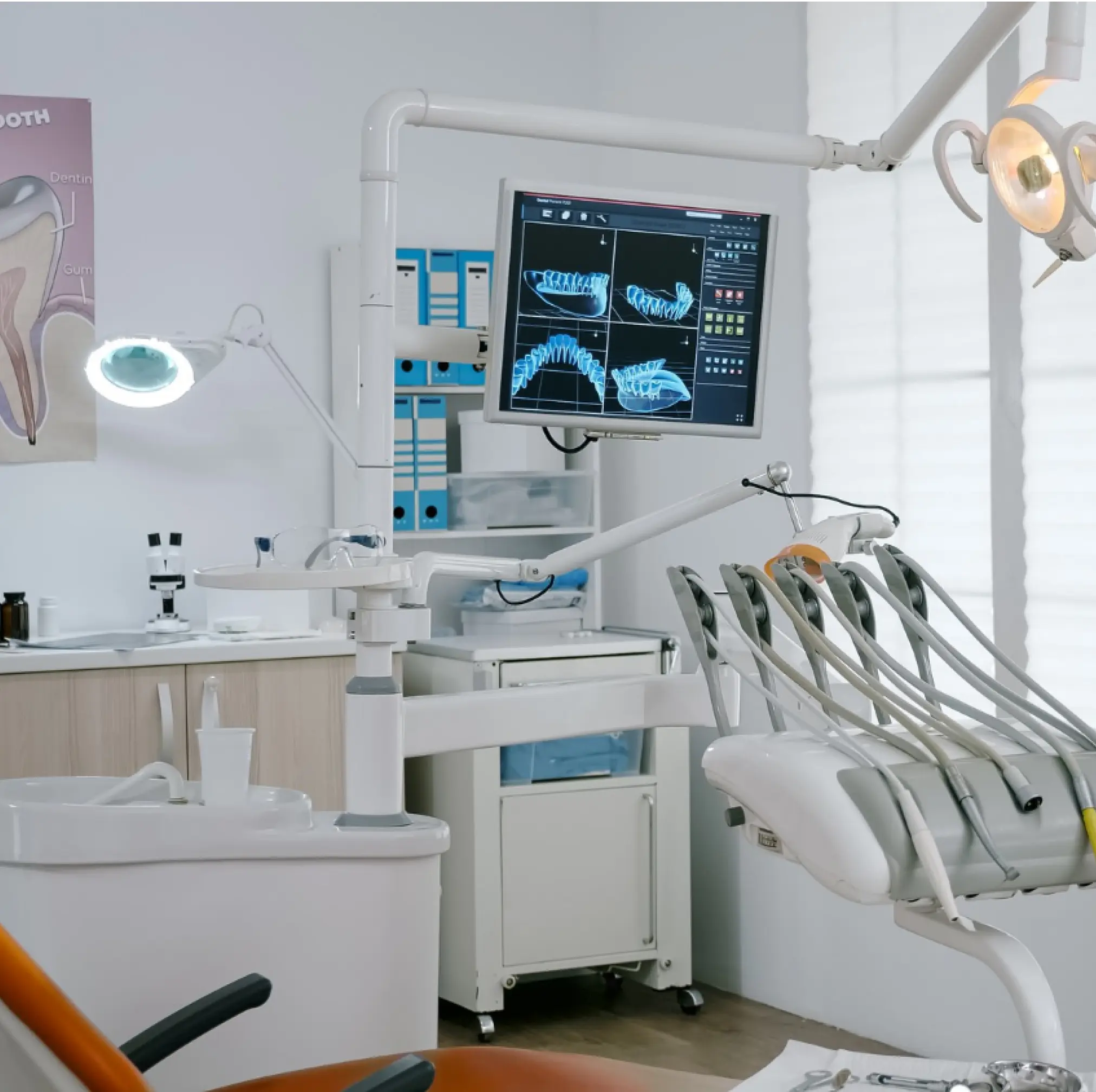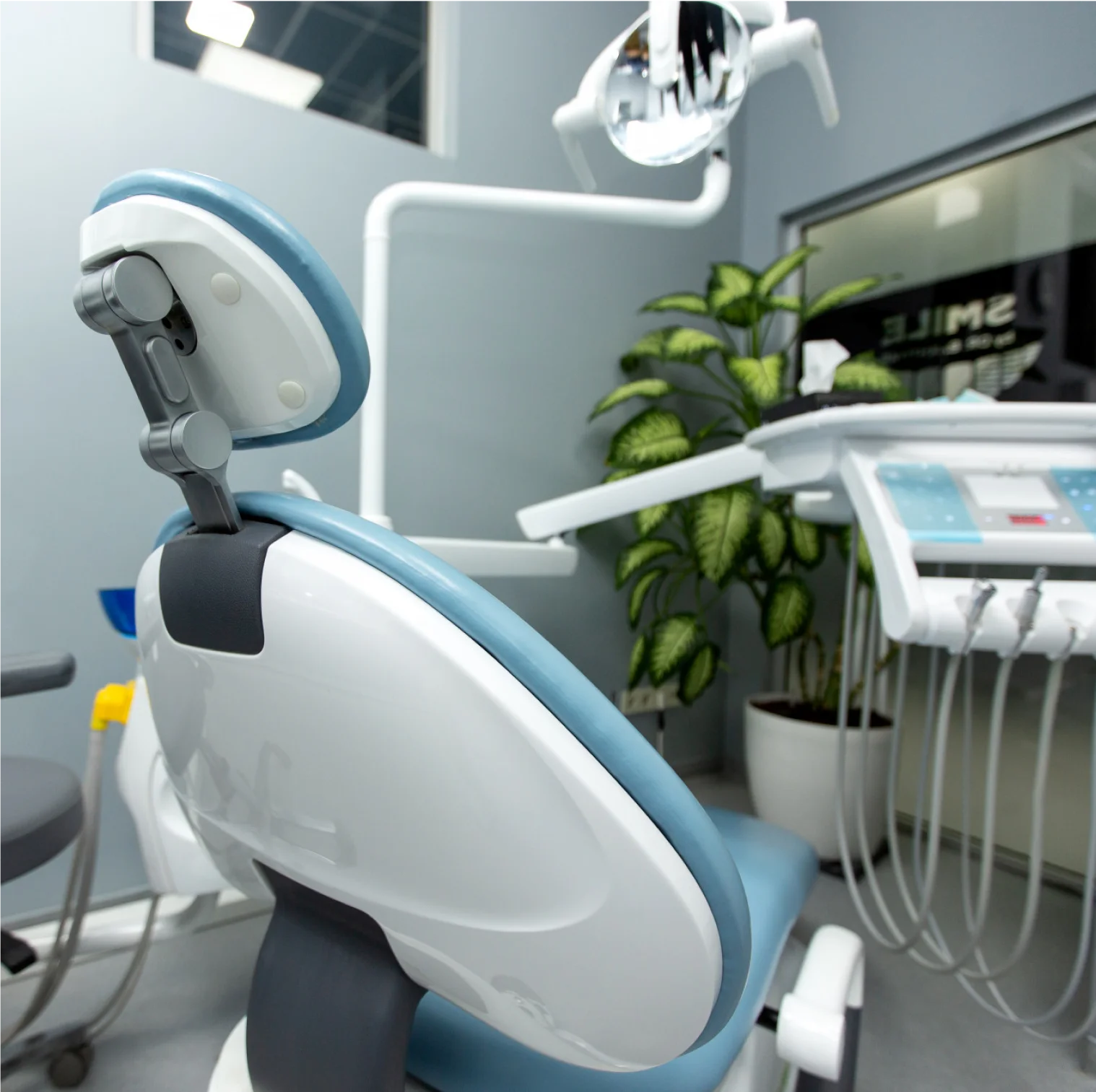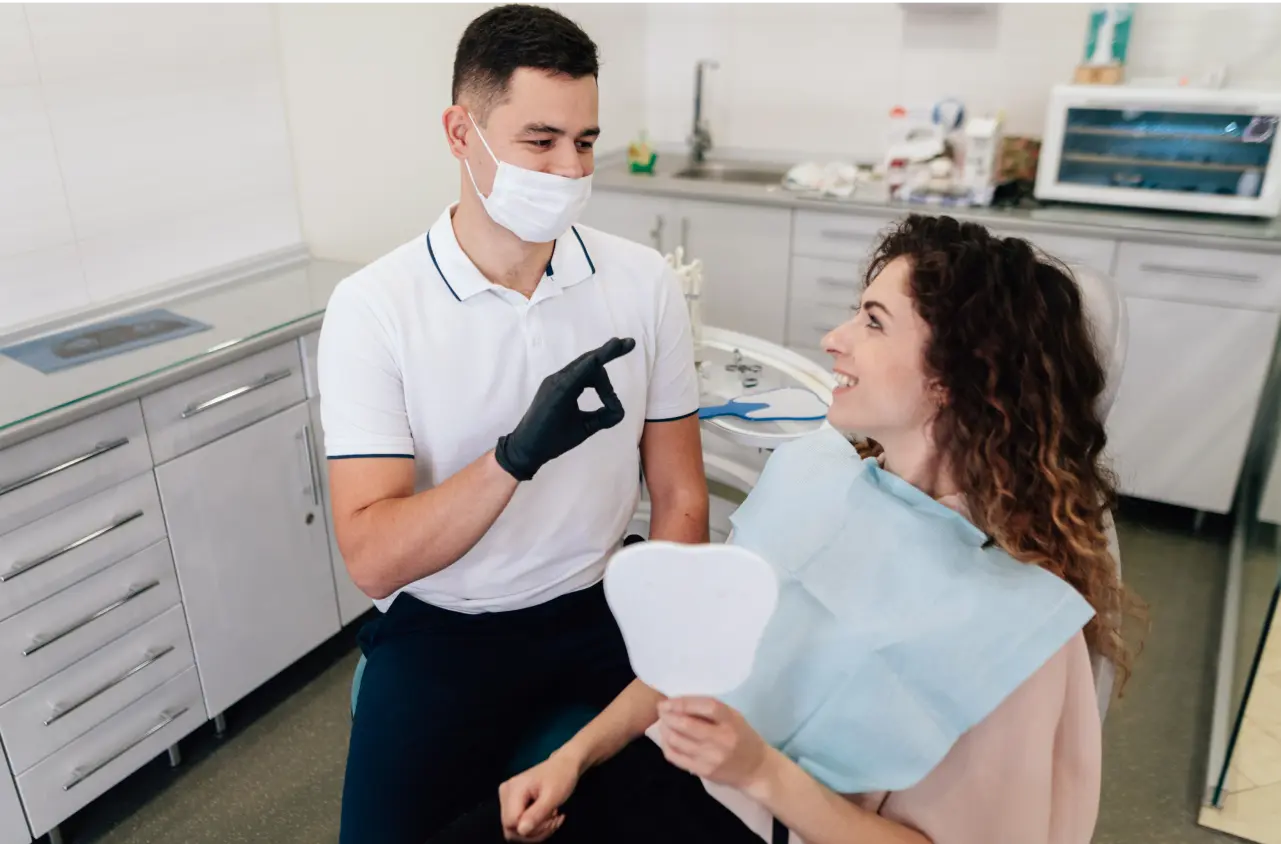Because Your Gums Deserve Equal Care as Your Teeth
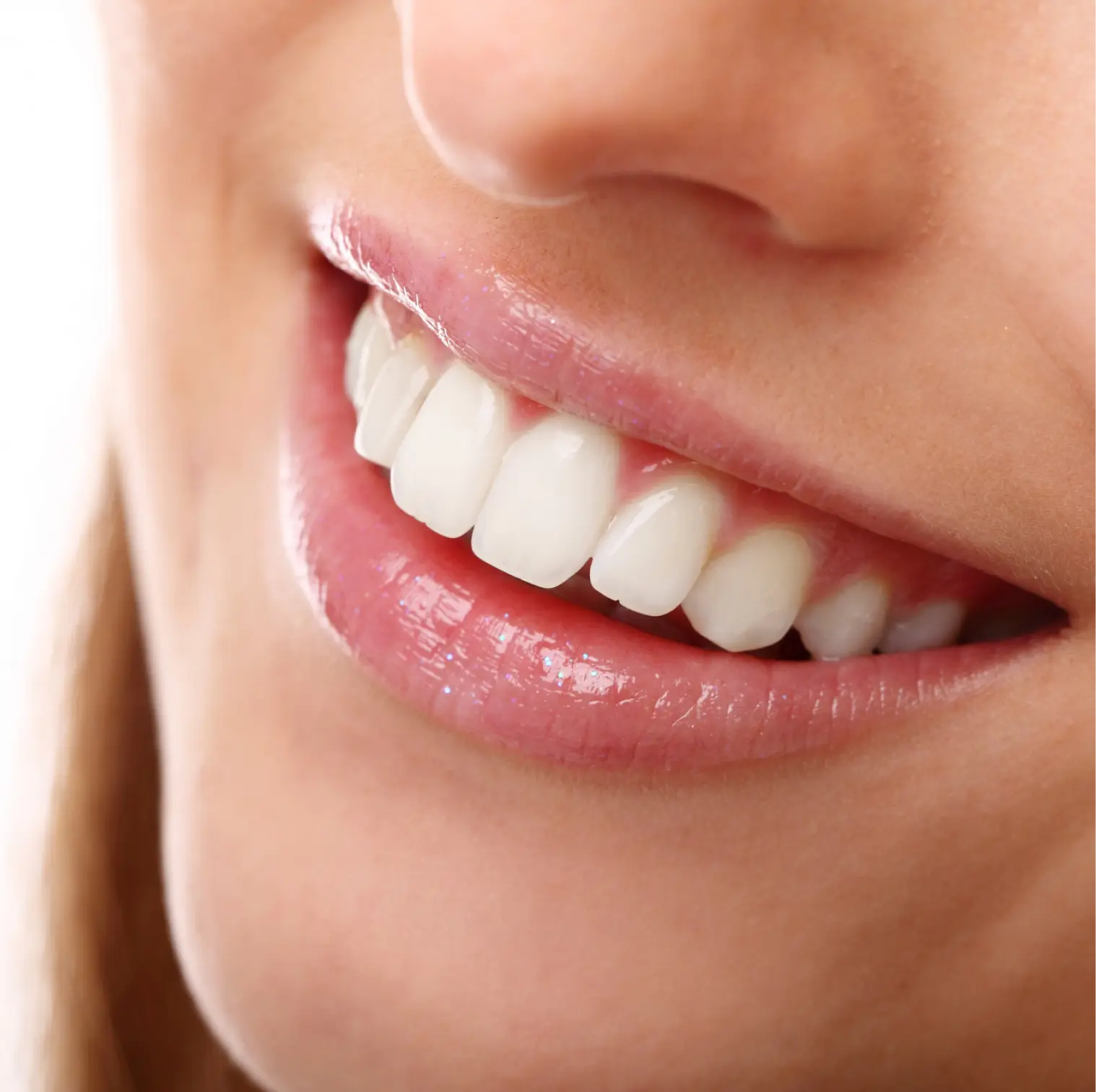
Our expert team provides personalised care to address all your periodontal needs.
Our Gum Treatment Services
Gums are as important as your teeth for good oral hygiene and a beautiful smile. Periodontics deals with the care of the tissues that surround the teeth and helps in the prevention, diagnosis, and gum disease treatment in Dubai as well as cosmetic treatments to enhance the beauty of your smile.
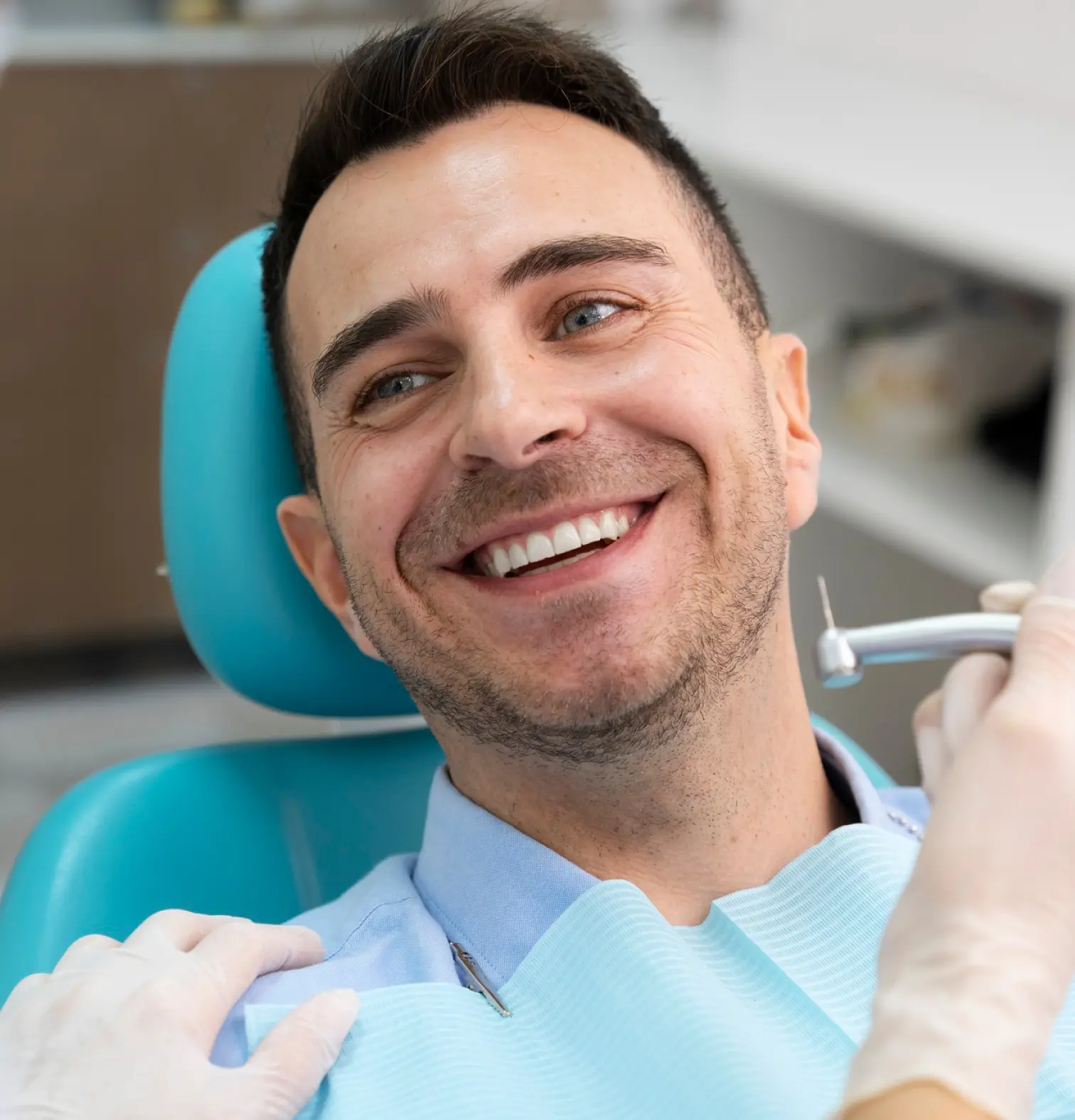
What is Gum Disease or Periodontal Disease?
Gum diseases, also known as periodontal diseases, are a set of inflammatory conditions that affect the tissues surrounding the teeth. Periodontal diseases range from simple gum inflammation to serious diseases that result in major damage to the soft tissue and bone that support the teeth and would require gum disease treatment in Dubai. In the worst cases, teeth are lost. Our mouths are full of bacteria which can lead to infection of your gums. These bacteria, along with mucus and other particles constantly form a sticky, colourless “plaque” on teeth. Although brushing and flossing can remove plaque to a large extent, some of it hardens to form a substance called tartar that can be removed only through professional cleaning by a gum specialist (Periodontist) in Dubai.
We use the latest dental technology to provide precise and effective gum treatments, ensuring your comfort and the best possible outcomes.
The Various Stages of Gum or Periodontal Disease
Gingivitis
If tartar and plaque are not removed in time, the bacteria can cause an inflammation of the gums called Gingivitis. In Gingivitis, the gums become red, swollen, and can bleed easily. Gingivitis is a mild form of gum disease that can usually be reversed with daily brushing and flossing, and cleaning by a dentist or periodontist in Dubai. Gingivitis does not include any loss of bone and tissue that hold teeth in place.
Gingivitis can be treated with regular visits to our Gum Care Dental Clinic in Dubai, along with proper brushing and flossing.
Periodontitis
If left untreated, gingivitis can lead to a more severe condition called Periodontitis, where the infection spreads below the gum line and eventually leads to bone loss and resulting in tooth loss. In periodontitis, gums pull away from the teeth and form “pockets” that are infected. The body’s immune system fights the bacteria as the plaque spreads and grows below the gum line. Bacterial toxins and the body’s enzymes fighting the infection actually start to break down the supporting structures of the teeth.
Read More
Gum Treatment Services

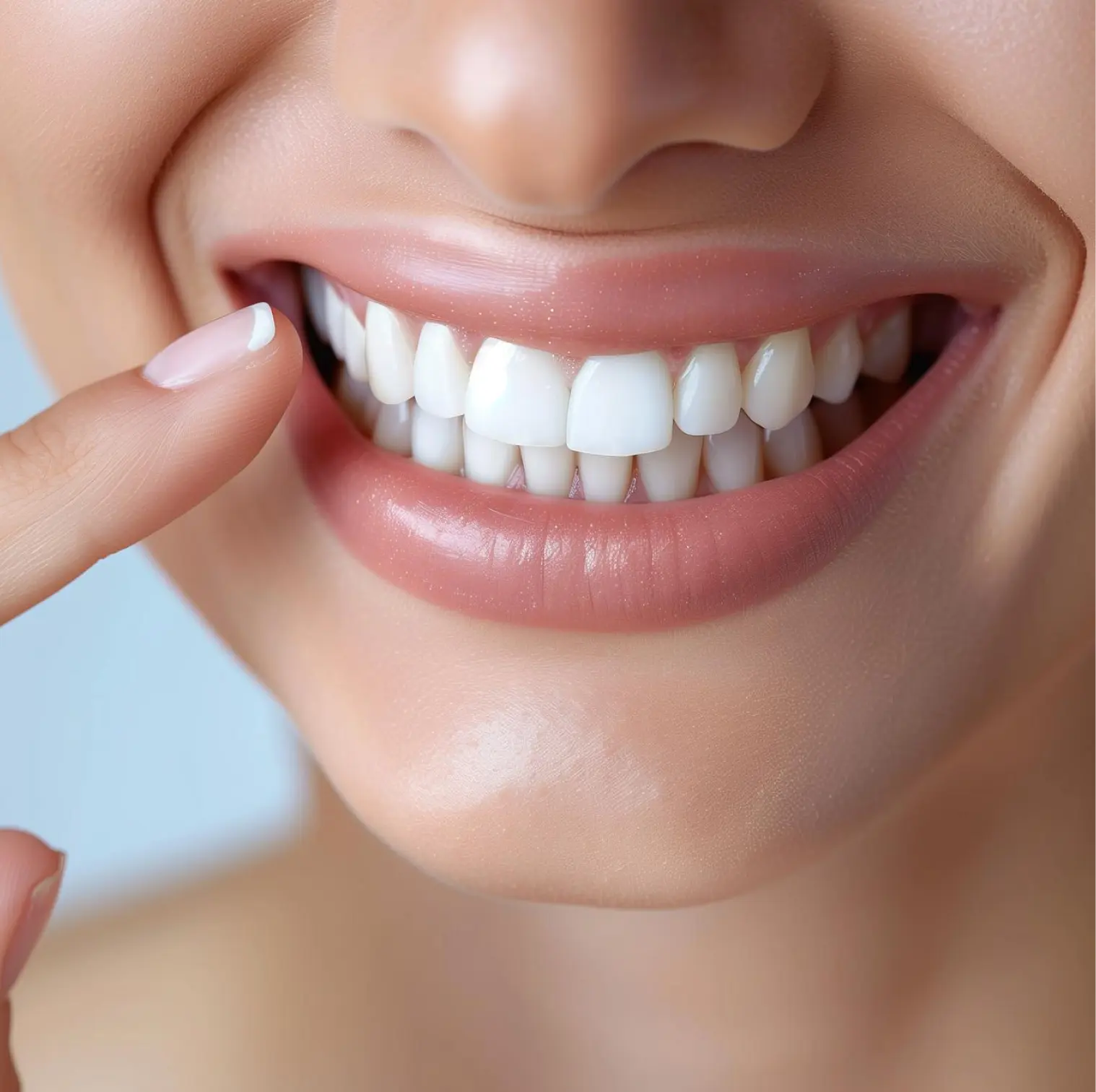
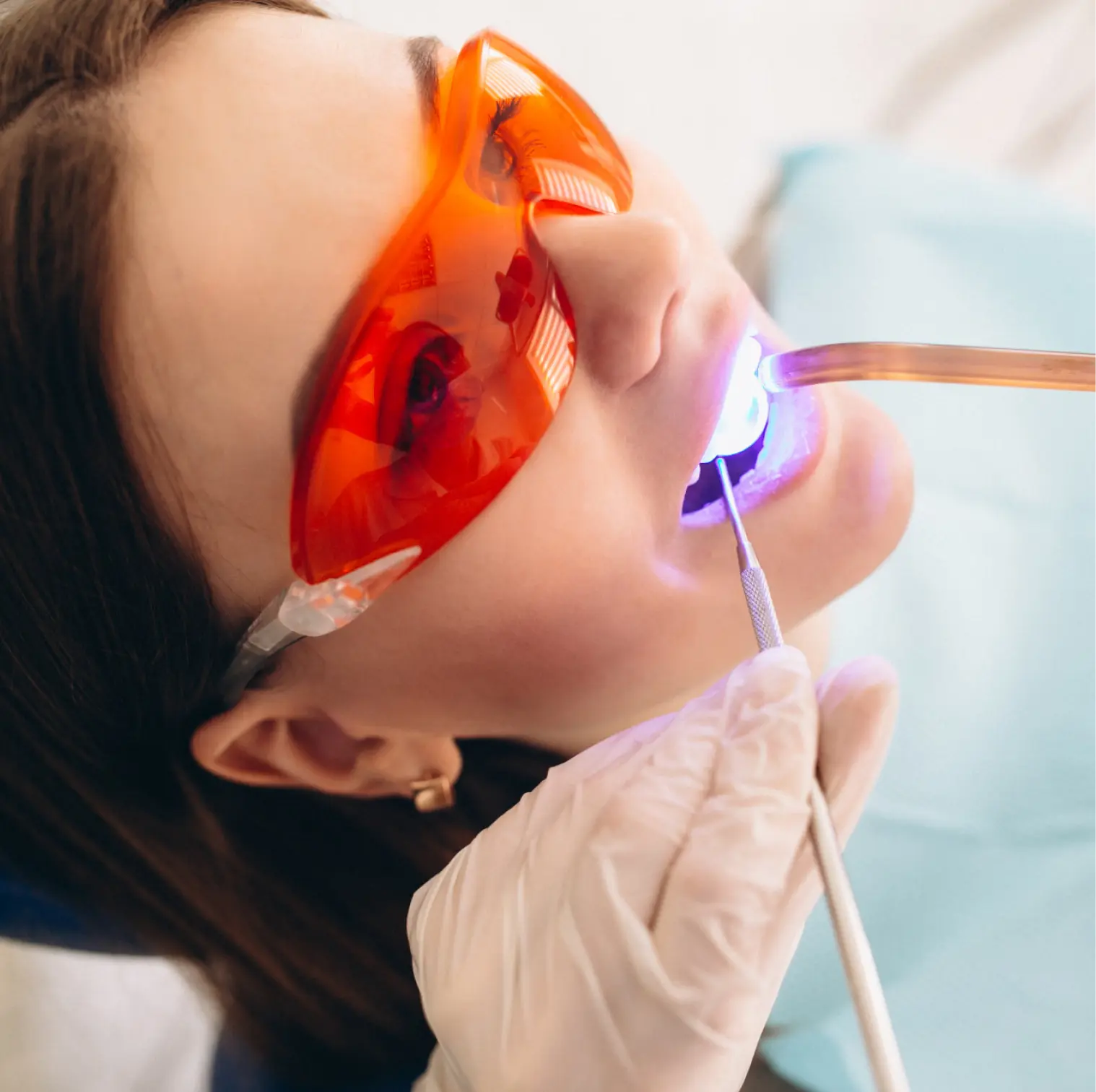
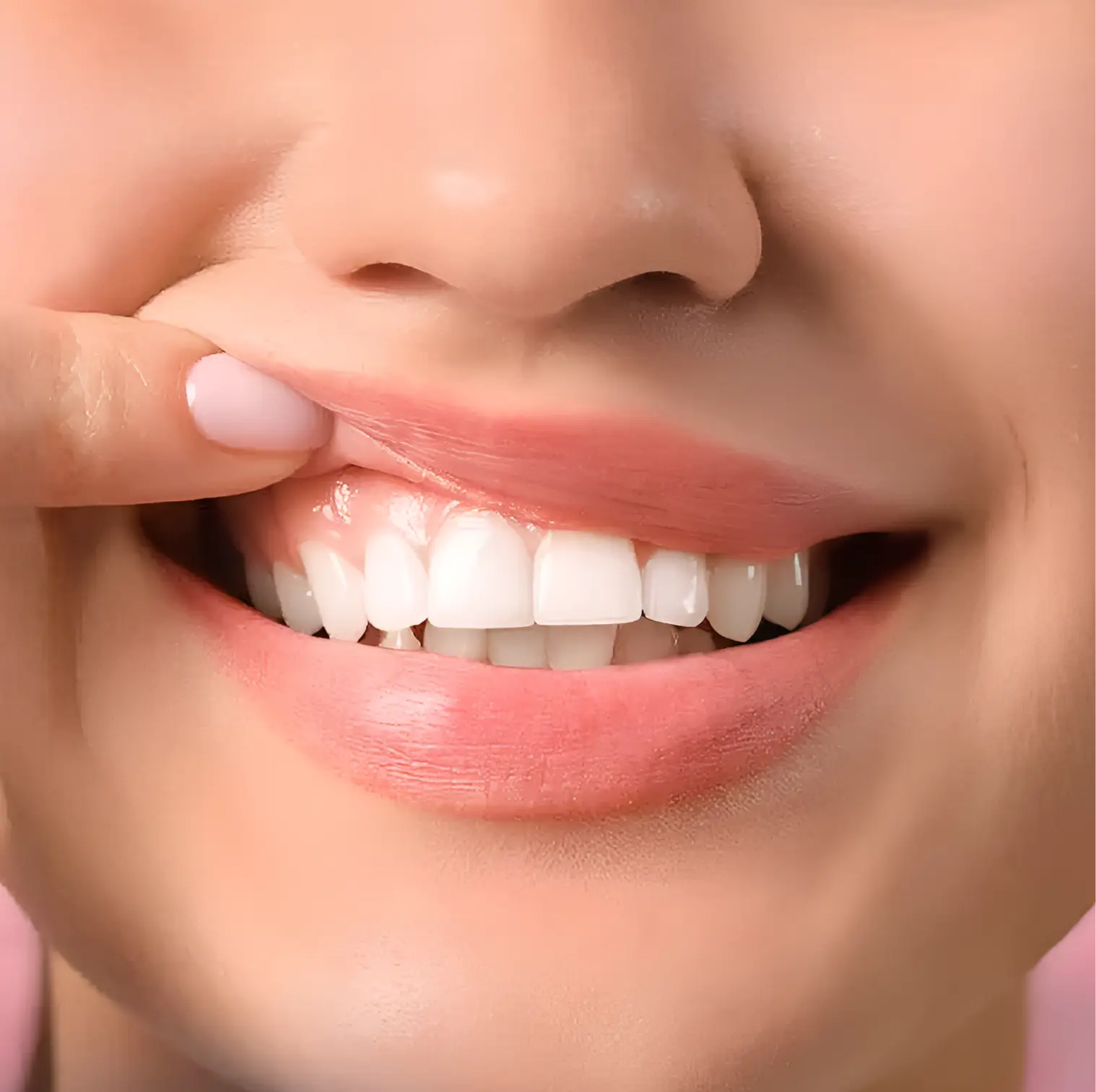

Treatment for Gingivitis and Periodontitis
Gum diseases can be treated by periodontists using both non-surgical and surgical procedures. The non-surgical methods which periodontists include in their treatment are professional deep cleaning, scaling, and root planing. Antibiotic medications can also be prescribed to fight the infection. Surgical treatment includes bone grafts, soft tissue grafts, guided tissue regeneration and frenectomy, and bone surgery.
The only type of periodontal disease that can be cured is gingivitis, the early stage of gum disease. Gum disease is generally not curable, but it is treatable and more importantly, preventable. A complete review of your dental history followed by a detailed oral checkup is conducted by a dentist. A probe is used to measure pocket depth. Measurements of anything between 1-3 mm indicate a healthy pocket depth, whereas a depth of 4mm or more will require deeper investigation.
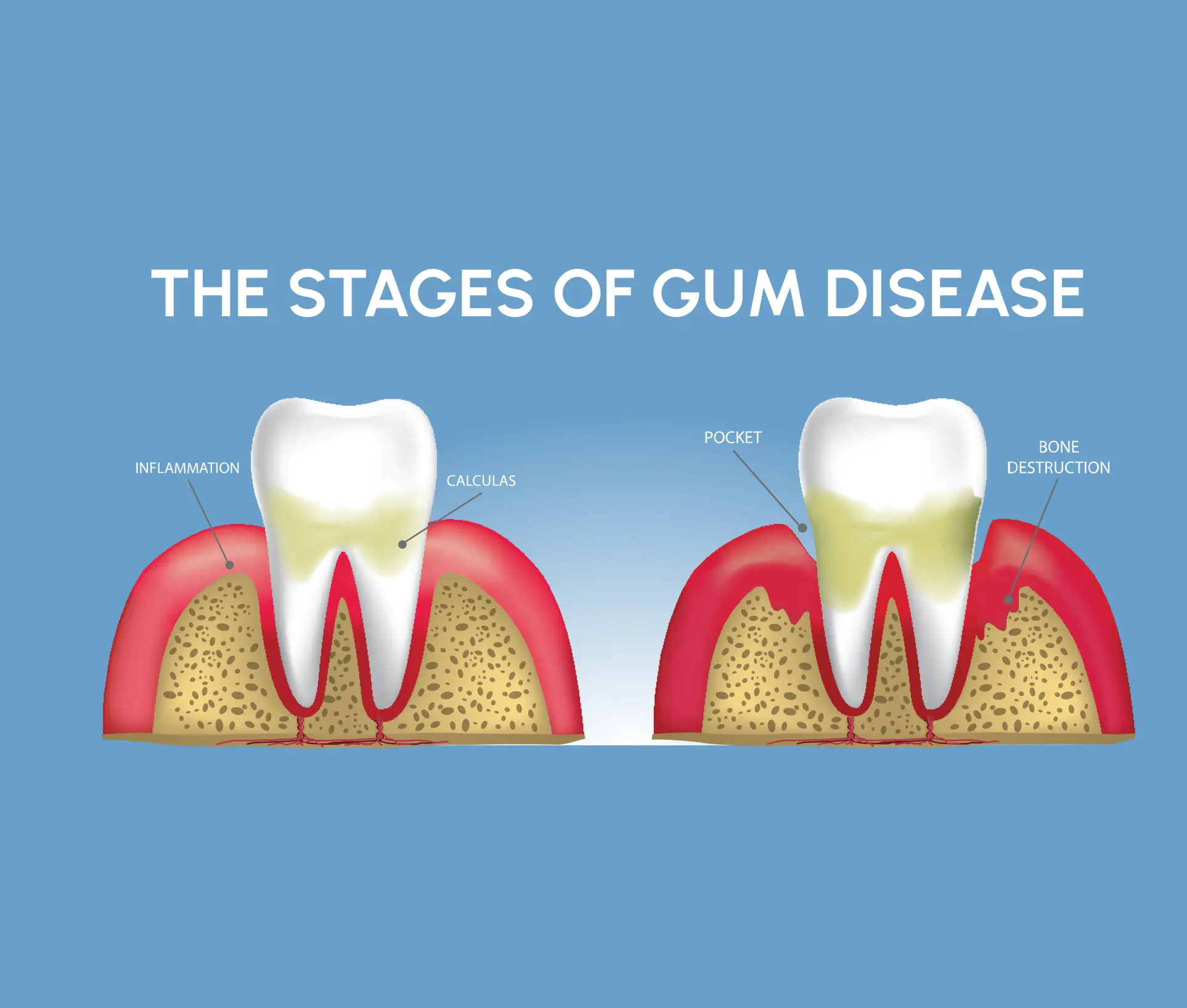
Gum Treatment Methods Include
Non-Surgical Treatments
Scaling and Root Planing
Treatment of gingivitis starts with professional deep scaling and root planing with ultrasonics, and hand instruments. Scaling removes the plaque and calculus attached to your teeth above and below the gum line. Root planing removes subgingival deposits and smoothens the root surface to prevent further plaque and calculus buildup. This promotes the healing of the gum tissues and facilitates reattachment to the teeth.
Our periodontist will then give you oral hygiene instructions. Following proper home care, routine is crucial for the best outcome of the treatment. Regular recall visits are also scheduled to study the progression of healing and prevent a recurrence.
You may also be advised to restore faulty restorations, bridges, and crowns as they can contribute to gum disease.
Drug Therapy
Antibiotic therapy can be used either alone or in combination with surgery and other therapies, to reduce or temporarily eliminate the bacteria associated with gum disease or suppress the destruction of the tooth’s attachment to the bone.
Chlorhexidine is an antimicrobial used to control plaque and gingivitis. Toothpaste that is marked antibacterial may contain fluoride and antimicrobial agents like triclosan, which helps to control plaque.
Surgical Treatments
If the condition is such to an extent that non-surgical treatments don’t find results, then alternative methods such as periodontal surgery are recommended. The methods we employ include flap surgery, bone grafts, soft tissue grafts, guided tissue generation.
Cosmetic Gum Treatment
The aesthetics of your smile can be greatly enhanced by undergoing cosmetic gum treatments that can be done on their own or in combination with other correction procedures. These treatments include sculpting of gums around the teeth, treatment of receding gums, and depigmentation of gums.
Gummy Smile Correction
Gummy smiles can be corrected using treatments such as orthodontic therapy, gum contouring surgery, etc. Gum contouring procedure done under local anesthesia is a permanent solution. The excess of the gum is removed away, using a scalpel or laser, in such a manner it reduces the gingival display as well as increases the length of the crown. It also matches the contour of the teeth. Most patients attest to having a smooth recovery post-operation.
Gum Depigmentation
Darkly pigmented gums aren’t a dysfunction and are not to be taken too seriously. Excess melanin deposition in the gums can result in dark or brown gums instead of the usual pink colour. Gum depigmentation involves removal of the thin superficial layer of your gums which results in the destruction of melanin-producing cells. The gums later undergo the healing process so as to appear pink.
Gum Recession Treatment
Gum recession is a condition in which the margin of the gum recedes back, exposing the root of the tooth. The pockets hence formed will allow malicious bacteria to grow and worsen the condition further. The signs of gum recession are tooth sensitivity and longer appearance of the tooth.
Pinholes
In this surgery, a tiny hole is made in the gum tissue using a needle. Through this pinhole, specialized instruments are then used to loosen the tissues and help in sliding and reposting the gumline to cover the exposed root area. It is necessary to maintain good oral hygiene and to schedule regular dental visits to study the effect of receding gums.
Laser Gum Treatments
Dental laser therapy is an error-free, innovative treatment that uses light beams to purge harmful bacteria that cause gum/periodontal diseases. This procedure is done without a scalpel, does not involve having to get stitches, and is painless.
Laser Assisted New Attachment Procedure (LANAP)
LANAP uses laser technology to remove disease tissue and bacteria from the affected areas while maintaining the height of the gum tissue.
LANAP is the only procedure which allows your gums and bone to be regenerated.
Laser Gum Depigmentation (Gum Bleaching)
Using laser light, a superficial upper layer of the gum tissue is vaporized, destroying the cells that produce melanin. Once the healing process starts, the newly formed tissue tends to be pink in colour rather than a dark pigmentation.
Laser Gum Recontouring
Compared to traditional gum silhouetting, this procedure is less invasive and pain-free. The laser is used to separate the excess gum tissue while also burning the tissue to decelerate any bleeding.

Book an Appointment
With Your Doctor NOW!
Don’t wait to take care of your gums. Reach out to us today and experience the difference.
We Accept Insurances From











FAQ
How Do I Know If I Have Gum Disease?
Symptoms of gum disease are bleeding gums, red, puffy, swollen gums, bad breath, tooth mobility, painful gums, looseness of the teeth, etc. Gum disease is treatable and, more importantly, preventable. Scheduling regular visits with your gum specialist is key to this. The frequency of professional teeth cleaning and polishing depends on your general oral health and home care. However, oral prophylaxis treatment is generally recommended once in 6 months.
Book an Appointment With Your Doctor NOW!
Ready for a brighter smile? Schedule your appointment with Dr. Paul’s Dental Clinic today and experience exceptional dental care.
